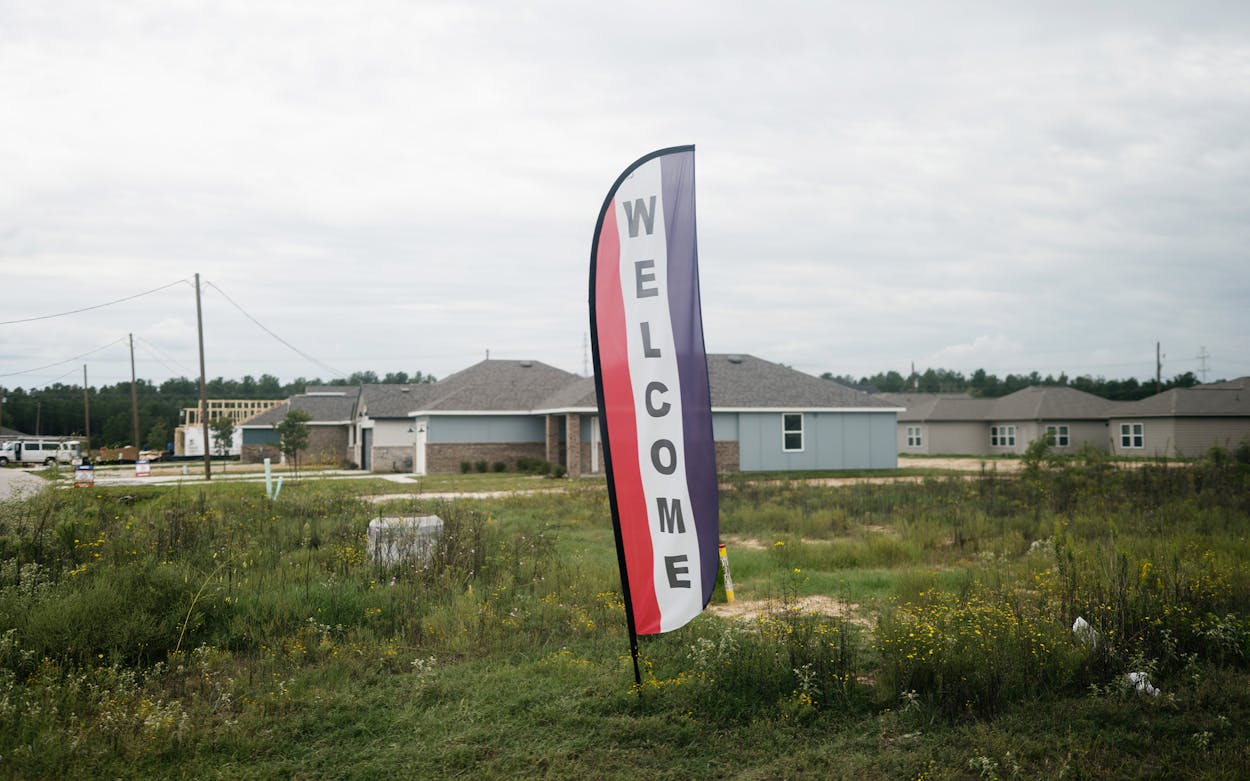In the twilight of the Obama presidency, the U.S. military announced that it would hold military training exercises in states across the Southwest, including Texas. From July through September 2015, troops would use public and private land to train for operations in foreign combat zones. The announcement was meant, in part, to allay fears. Citizens could rest assured that any soldiers seen crawling around in the woods were Americans, not Russians or Chinese infiltrating Bastrop. But there was a problem: some Americans feared their government more than they did foreign invaders. By March, conspiracy theories had bloomed: Jade Helm 15—as the exercises were called—was actually a federal takeover of the states. Texas, in particular, was a hotbed of wild notions. Conspiracy peddler Alex Jones warned that Obama was planning to wage war on the American people. Others worried that recently closed Walmarts would be repurposed as internment camps. A man in West Texas buried his guns, lest they be seized.
The Jade Helm chatter was mostly an internet sensation until April 2015, when Governor Greg Abbott very publicly ordered the Texas State Guard to monitor the feds. In doing so, the governor validated the paranoid impulses of his base. He let the tail wag the dog, turning a fringe obsession into a full-blown freak-out. Of course, the actual Jade Helm exercises came and went without event, and the fevered hive mind that thrives on apocalyptic visions of tyranny moved on to its next nightmare. If Abbott was embarrassed, he never showed it. If anything, Jade Helm taught him an important lesson early in his first term: there is no delusion too ludicrous to elevate if it pleases the right people.
Now, in Abbott’s third term, there is a new specter haunting Texas: a residential subdivision thirty miles northeast of downtown Houston called Colony Ridge.
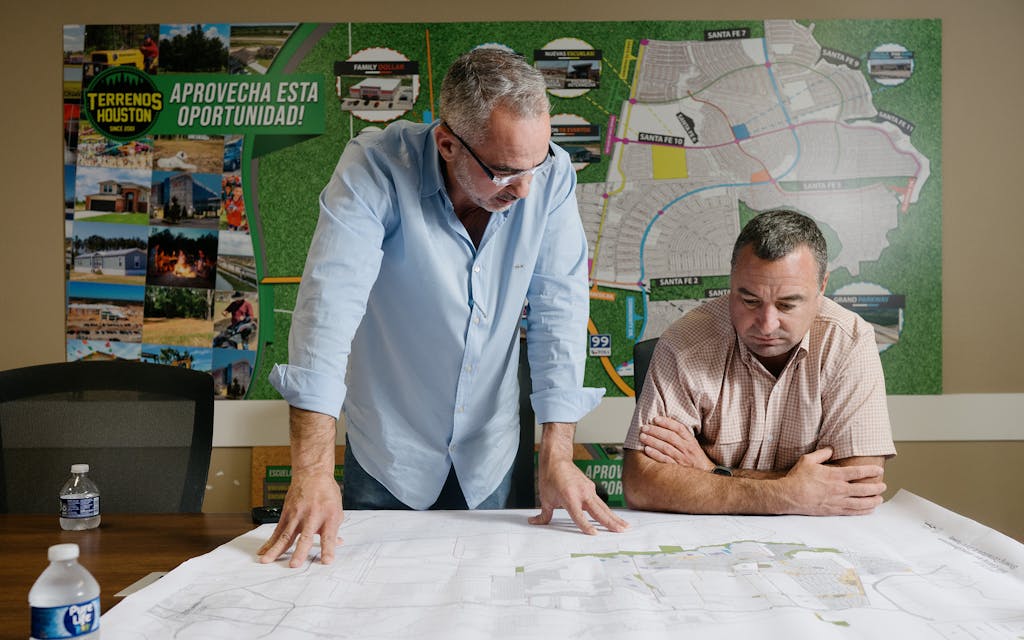
Colony Ridge is a vast and booming unincorporated subdivision carved out of what was once a soggy, forested patch of Liberty County. Home to some 40,000 souls, the area is a tight-knit community of primarily Hispanic families, many of whom work in construction, landscaping, and housecleaning. Local law enforcement and the developers believe that the majority of residents are undocumented immigrants from Latin America; most of the remainder are American-born Latinos. Colony Ridge is one of the fastest-growing parts of Texas for a reason: land here is relatively cheap, and the developers offer financing even for immigrants who lack Social Security numbers and credit scores. There are few of the onerous restrictions imposed by the typical homeowner association. In much of Colony Ridge, you can live in a trailer on your property while you gradually build your home—an appealing DIY approach for cash-poor buyers who work with their hands.
That’s the Colony Ridge as it actually exists. But there is a second Colony Ridge, the one depicted in right-wing media. In this alternate reality, the area is a crime-ridden, poverty-stricken settlement of illegal aliens that, in the words of the Daily Wire, “could become a strategic asset for [drug] cartels.” It’s a Brazilian-style favela of shanties and trash and feral dogs that has somehow been hidden from the world for more than a decade. It’s a “magnet” for all the “invaders” streaming across Joe Biden’s open borders.
Over the past two months, this second Colony Ridge has rapidly expanded from the far-right fringe of American politics into the GOP mainstream—like an out-of-control wildfire spreading from treetop to treetop. Republican congressman Ronny Jackson, who represents a district hundreds of miles away in the Panhandle and recently threatened law enforcement officers at a rodeo, complained that “this haven for criminal cartels is terrorizing the state.” Republican officials, including Lieutenant Governor Dan Patrick, have flown over the area as if they were generals inspecting Helmand Province. Attorney General Ken Paxton is investigating the development, including by asking the developers for a list of their customers.
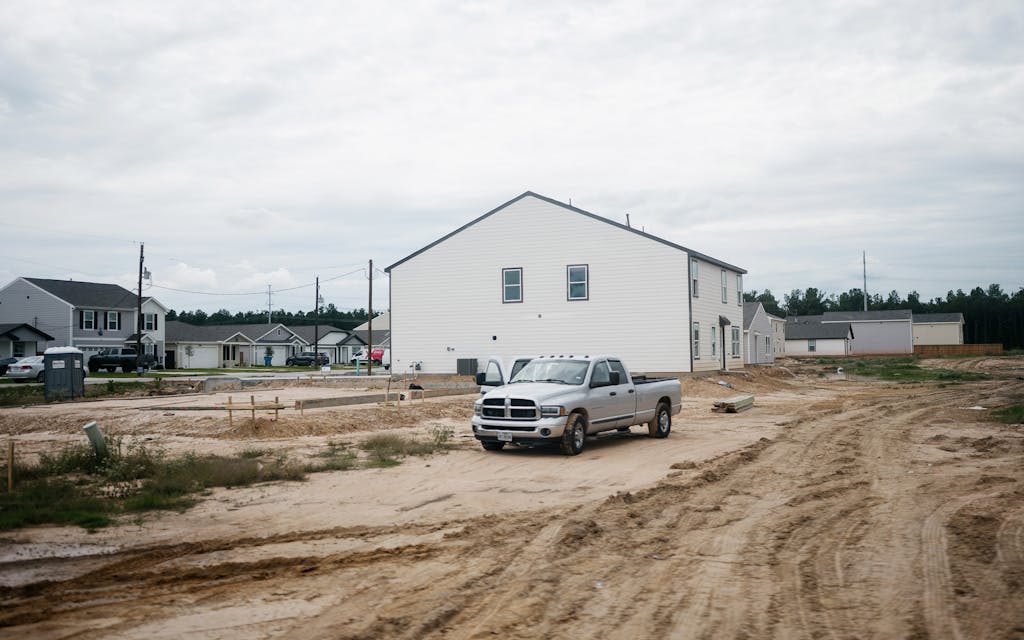
The Texas Republican Party passed a resolution in late September calling on the Legislature to take action “to prevent further settlement of illegal aliens in Colony Ridge and any other areas of Texas.” Four far-right state legislators went even further. In a letter, they called on their colleagues to seize control of Liberty County as part of an effort to “clean up and clean out” Colony Ridge. Governor Abbott is apparently listening. He directed the Legislature to take up legislation concerning public safety and home ownership in Colony Ridge during an October special session focused on private school vouchers, an Abbott priority.
Cynthia Silva, a thirty-year-old mom of three who founded a GOP club in Colony Ridge, can’t believe what she’s hearing. Colony Ridge represents a respite from poverty and violence, she told me as we drove around her neighborhood one recent weekday morning. “A lot of us,” she said, “came here to escape Houston.” She and her husband, Juan—both U.S. citizens—were born and raised in a gang-plagued neighborhood in Houston’s East End. The infamous 2019 Harding Street raid, when Houston police officers led by a corrupt cop shot and killed an elderly couple in a no-knock raid, took place just down the street from her home. After the couple married at age eighteen, they moved in with Juan’s mom, where she says they were lucky to get a hot meal or a hot shower. She said a man once dumped a woman’s body in their front yard. Their cars were stolen and their house cleaned out by thieves.
“After the botched [Harding Street] raid, I said, ‘Okay, we’re living in an area where we can’t even trust the police. We got to go.’ ” Silva told a realtor that she and her husband wanted to live in an affordable area outside of Houston, far from inner-city problems. The community needed to be predominantly Hispanic so her Spanish-speaking Puerto Rican grandparents would feel comfortable. Eventually they found their way to Colony Ridge. In 2021, they used a Federal Housing Administration loan to buy a 1,155-square-foot brick home for $168,000 on a rapidly developing street of starter homes with treeless lawns.
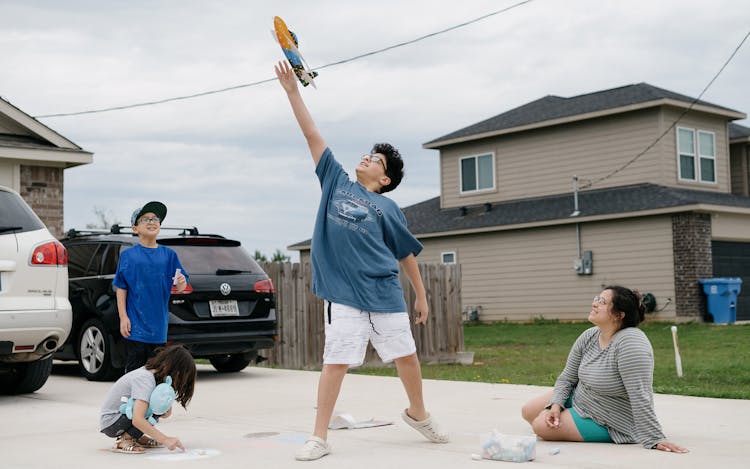
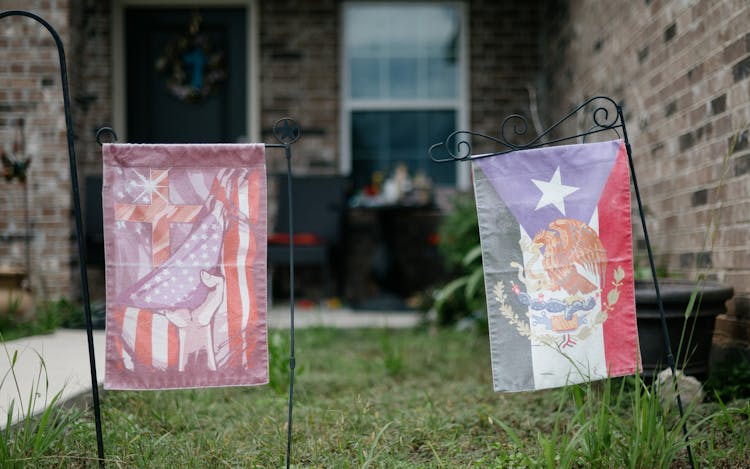
Colony Ridge has given the Silvas a taste of exurban ease. While homeschooling her three kids, Cynthia has found work writing for a new local Spanish-language newspaper. Juan has built a career as an architectural technician. Cynthia is on a first-name basis with the constables and deputy sheriffs. And they have found a healthy community. As we drove, Silva pointed out the homes of friends and acquaintances, almost all of them migrants: the Panamanian woman who owns a little cafe, the gay Cuban man who runs a popular paintball joint. “The ice cream guy lives here,” she said, gesturing at a house with an ice cream truck parked outside. “This cul-de-sac is all his family.” She spoke with pride about the guy who sells elotes from underneath a roadside canopy. He’s going to be serving his grilled corn to the chamber of commerce soon.
Casual visitors can easily misinterpret Colony Ridge. They see dilapidated mobile homes surrounded by junk—and there are plenty of those—as signs of squalor and decay. But homes here tend to be works in progress. Guys who work in construction get friends to help them pour a concrete slab; they trade their labor for a roof. Many run blue-collar businesses out of their homes; that’s why you see a skid steer or a semitrailer parked in some yards. In developments such as Colony Ridge, “the community gets nicer over time rather than worse over time,” contends John Harris, one of the developers and the nephew of Roy Harris, a heavyweight boxing champion from the nearby town of Cut and Shoot.
Silva took me to see a friend, Raquel Reyna, a 46-year-old undocumented woman who had, until recently, lived in the Houston area since she migrated from Mexico when she was 19. Like many residents of Colony Ridge, Reyna and her husband built their place from scratch, bit by bit. They started out three years ago in a run-down trailer and then eventually acquired a nicer mobile home, around which they planted flowers and a garden and built pens for chickens, ducks, and goats. Part of the lot is already cleared of vegetation for when the couple can afford to build a house. Colony Ridge doesn’t have an animal shelter, so Reyna started one at her home—a makeshift kennel housing 27 hyper dogs. Neighbors help with canine-related chores on Sundays.“I like it here,” Reyna said. “At night, I can sit with my husband and my kids play and I feel safe.” Her biggest complaint? Not enough police.
Silva says of Reyna: “She’s from Mexico; my family is from Puerto Rico. Everybody knows everybody there. We have un pueblito. Same thing here. ‘It takes a village’ is true out here.”
That afternoon, a quartet of lawmakers—three Republicans and one Democrat—were set to tour the development ahead of the special legislative session. As we waited for their arrival, Silva explained her state of political and spiritual confusion. The thirty-year-old is a self-described “hard-core” MAGA/Trump fan. She’s antiabortion. She attends a Pentecostal church, and no one in her family has been vaccinated. The conspiracies about her community feel like an attack on her values.
“I’m just so confused. I feel so let down by the Republican Party. I don’t even know what I am anymore,” she said. “How can you say that this country was founded on God and on the principles of Christianity, but not love your neighbor no matter what his papers are? Why don’t you love the kingdom of God more than this country?”
Later that evening, she changed out of her Puerto Rico–themed chanclas into less casual attire. The tea party in nearby Kingwood had invited her to speak to its members about Colony Ridge. But her message—that the controversy is much ado about nothing—didn’t sit well with some in the crowd. “One lady kept saying, ‘This is America; they should speak only English.’ That drives me insane.” Silva, who is bilingual, said she won’t be returning.
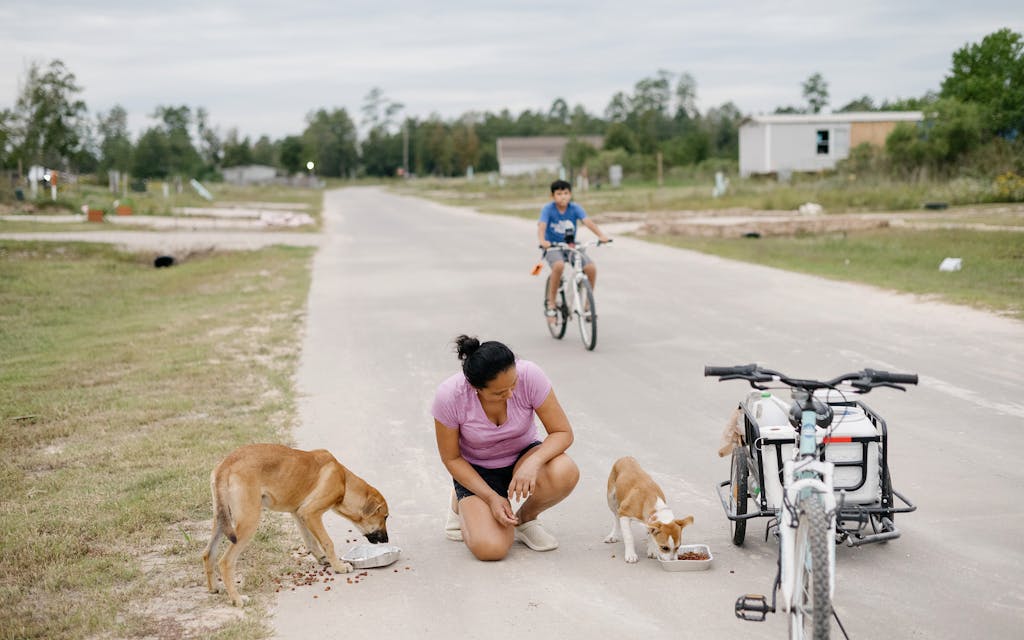
How did the Texas GOP become consumed by this Houston-area subdivision?
The story goes back more than a decade. John Harris and his brother, Trey, got their start buying distressed lots in Montgomery and Liberty Counties for cheap and then offering the properties to buyers—mostly Hispanic—with owner financing. “We found that we were able to offer financing to people that clearly didn’t have the cash to buy. But they paid the bills. It was surprising to us,” John Harris says.
Around 2010, they ran low on inventory and began looking for a bigger property to buy. They found 500 acres in Liberty County, subdivided the land into half-acre tracts, and dubbed the development Montebello. Within a year, they had sold all 900 lots. Then they bought an additional 900 acres and sold 1,400 lots. They bought more land and more land. Today Colony Ridge comprises more than fifty square miles and an estimated 40,000 residents. Its scale is staggering—a maze of streets with wildly disparate housing, from dilapidated mobile homes to brand-new two-stories that wouldn’t look out of place in Kingwood or Plano or Leander. Once it’s completely built out, there could be 100,000 residents—a city roughly the size of Temple or Wichita Falls.
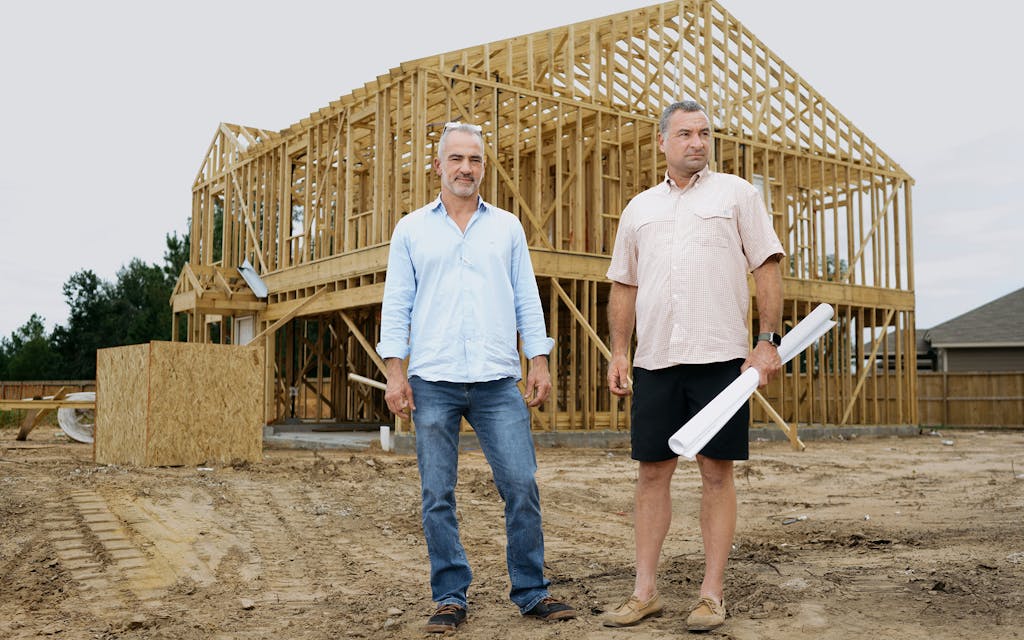
The Harrises’ approach to development is brutal on the environment: the thick forests are bulldozed and the wetlands filled in. On the rainy days I visited, there was considerable street flooding. In newly razed areas, runoff was causing erosion on the denuded banks of silt-filled creeks. The financing model is crude too: the Harrises typically offer loans at interest rates of 13 percent—higher than what’s charged by many credit cards and steep enough to cause a steady stream of foreclosures. In the past twelve months alone, foreclosure auctions were planned for almost 3,100 Colony Ridge properties financed by the Harrises, comprising about 95 percent of all foreclosures in Liberty County.
County officials have acknowledged that they have struggled to keep up with the pace of development. But the Harrises make few apologies for their business model. Both brothers are former boxers, and they aren’t afraid to punch back at politicians. Trey Harris, who showed up to the tour with legislators wearing flip-flops, shorts, and a casual fishing shirt, said the backlash was based on “lies.” Colony Ridge, he said, “is an opportunity for people to have home ownerships, and to grow their wealth and prosperity through real estate and land ownership.”
But when the Harrises began bulldozing the forests in this part of Liberty County a decade ago, they disturbed “originals”—white families that trace their Liberty County roots back generations. No one was more upset about the incursion than Lee Ann Penton-Walker, who lives in the deep-rooted community of Plum Grove, a town of around 1,600 that had long enjoyed its distance from Houston. A self-described “redneck with high tech,” Penton-Walker has waged an angry battle against the Harrises, accusing them of trashing her “little paradise” with clear-cutting, pollution, loud music, and crime, and—perhaps most significant of all—forcing her to live next to folks she can’t stand. “I do not like illegals in any form,” she told me. “I don’t like illegal Albanians. I don’t like illegal Israelis. I don’t like illegal Canadians. I don’t like illegal Mexicans. I don’t like illegal Croatians. I don’t like illegal El Salvadorians. I. Don’t. Like. Illegals. That’s it.”

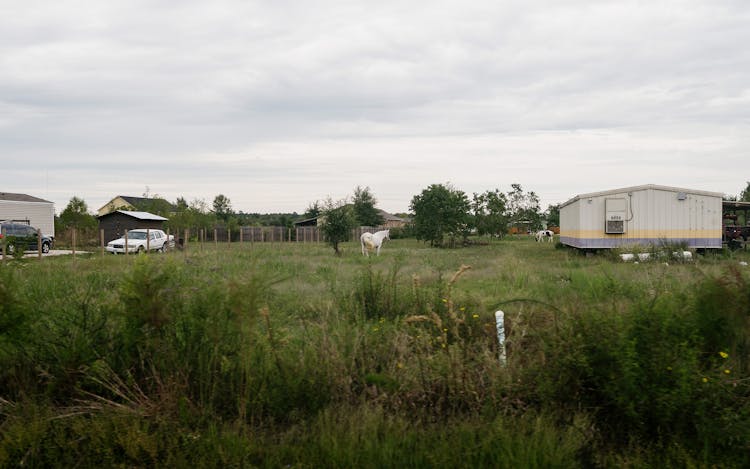
When she was elected to the Plum Grove City Council in 2015, rounds of litigation ensued.That year, the town denied Colony Ridge Development LLC’s plat applications for the development of new homes in one of its subdivisions. Colony Ridge filed suit, accusing the town of trying to prevent the company from “selling the properties to Hispanic persons.” (Colony Ridge dropped the suit after the development was allowed to move forward.) In 2020, Penton-Walker had become mayor and it was the town’s turn to sue. Plum Grove accused the Colony Ridge developers of allowing sewage to flow into area creeks and failing to provide adequate drainage. (The suit, which has been sealed by a Liberty County judge, is ongoing.)
The Plum Grove council also launched an unusual PR campaign of sorts. It hired Wayne Dolcefino, a bombastic former investigative reporter for a Houston TV station, to dig into Colony Ridge. Dolcefino delivered a series of sensational videos, most of which featured audio of an attorney for Colony Ridge threatening to “kick [Dolcefino’s] ass” and calling him an “absolute dickhead.” Colony Ridge Development got so fed up with Penton-Walker that in 2021—after she was no longer mayor—it sued her and the five city council members for $1 million, accusing the officials of harassment for hiring Dolcefino, among other issues. (Colony Ridge lost and paid Penton-Walker’s attorney’s fees.)
Penton-Walker feels vindicated by what’s come to pass in the three years since she was mayor. She had warned the “good ol’ boys” that run the county—“complacent motherf—ers,” she calls them—that the schools would be overrun by the students of migrants, but they laughed her off. Today Cleveland ISD is one of the fastest-growing districts in the state, having doubled in size in three years. Now she’s the one laughing—bitterly. “We’re never going to allow school bonds,” she says, referring to bond measures to build new facilities rejected by the county’s Republican voting base. “I’m not building infrastructure for people I intend on returning home.”
The conflict between Plum Grove and Colony Ridge might have remained a local affair. But the immigration aspect eventually attracted the attention of Todd Bensman, a former Dallas Morning News journalist who now works for the Center for Immigration Studies, which is listed as a hate group by the Southern Poverty Law Center. (CIS disputes the label.) Bensman interviewed Penton-Walker for a chapter on Colony Ridge in his book Overrun: How Joe Biden Unleashed the Greatest Border Crisis in U.S. History, which was published in February.
Then in late April, Francisco Oropeza, a Mexican national who had been deported four times, allegedly killed five of his neighbors, including a nine-year-old boy, near Cleveland, Texas—fifteen miles from Colony Ridge—after a neighbor asked him to stop shooting his AR-15-style rifle in his yard. Two days later, Greg Abbott incorrectly called the victims “illegal immigrants.” (At least one of the victims was a legal U.S. resident.) That wasn’t the only error. A few days after the shooting, Bensman published a story with a sensational headline “Texas Massacre Happened in America’s Largest Illegal Immigrant ‘Colonia’ — and Major U.S. Media Won’t Say So.” But the reason “major media” didn’t report that the shooting had occurred in Colony Ridge was that it didn’t occur in Colony Ridge. The article laid out “evidence of cartel involvement” in Colony Ridge, including by citing a 2021 methamphetamine bust at a lab “inside one of the Colony Ridge dwellings.” That too was a geographical error: the lab was a full thirty miles away, in a different part of the county. (Bensman defends his story as based on extensive reporting in and around Colony Ridge. He argues that Cleveland is “in the Colony Ridge spillover lane for crime, traffic jams, clear-cutting, and floods.” He adds that some local law enforcement officials “most definitely believe” that many crimes occurring outside of the community are “happening because of Colony Ridge.”)
Regardless, Bensman’s mythmaking attracted attention from right-wing provocateurs, helping to fuel several cycles of increasingly hysterical coverage from the Daily Wire, Fox News, the New York Post, and TikTokers. His work was even cited by the entire Texas GOP congressional delegation in a letter calling for state investigations into the community.
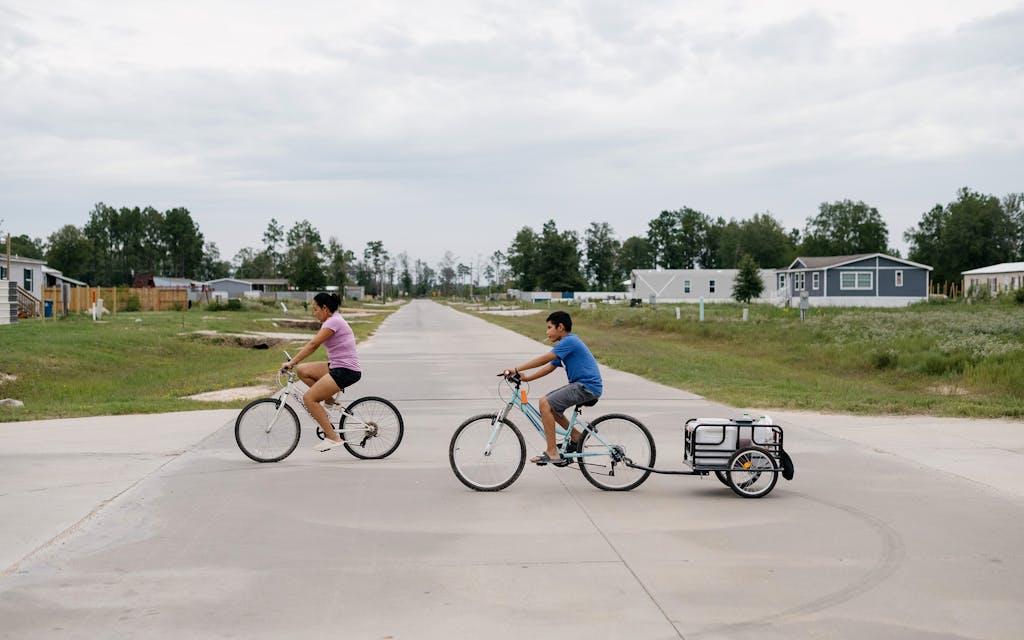
Like the Jade Helm conspiracy, the Colony Ridge panic stems in large part from layers of fiction. Colony Ridge, the real place, isn’t a “no-go zone” controlled by drug cartels, as Abbott told a podcaster that he had “heard.” Sheriff Bobby Rader told me his deputies go anywhere they like “without any fear or any hesitation” and that the crime rate is no higher in Colony Ridge than in other parts of the county. The constable for the area, Zack Harkness, said the biggest gang problem in Liberty County is with the Aryan Brotherhood, a white supremacist group. Silva argues that crime is worse in Plum Grove, where locals steer clear of a street she dubs “Meth Circle.”
Colony Ridge isn’t a colonia, either, at least not by the state’s definition of a community with “substandard housing developments . . . where residents lack basic services such as drinking water, sewage treatment, and paved roads.” The subdivision has basic services—a centralized system of water and wastewater and electric and gas—and the streets are paved. Colony Ridge certainly has substandard housing, but this is East Texas—mobile homes surrounded by junk is not a bug of rural life in the region; it’s a feature.
There are legitimate concerns about the neighborhood. There are few sidewalks, law enforcement is spread thin, dogs roam freely, brush fires are common, Cleveland ISD is struggling with staggering increases in enrollment, and state environmental regulators have dinged the Colony Ridge developers for allegedly not heeding erosion-control standards. Everything has gone up in a hurry. An engineering firm recently warned that the area was “not currently equipped to adequately manage” overflow because of rapid growth and climate change.
But this is the Lone Star State. Unfettered sprawl, affordable housing, and a pliant labor force—one fortified by undocumented immigrants—are key elements in the so-called Texas Miracle. For many years, county government officials have been begging the Legislature to give them tools to regulate development in areas outside cities—and have gotten nowhere. That’s in part because of the political influence of developers including Trey Harris, who has donated $1.4 million to Abbott alone. Colony Ridge may not be pretty, and it may be exploitative by some standards, but it seems to be fulfilling a Texan niche: providing cheap housing to blue-collar families.
Greg Abbott knows all of this, of course. He’s apt to take credit for the very business conditions that have allowed the Harrises to thrive. But he also wants to harness the energy of the conspiracy-minded. Agitated activists in his party refer to Colony Ridge as #Abbottville and are demanding that elected officials do something. (Land-use reform? Mass deportations? Their preferred solution is not entirely clear.) As with Jade Helm, the governor has decided it’s more expedient to fuel the paranoia of his base than to ignore it, much less to counter it with facts. But some in his party who’ve actually been to Colony Ridge admit it’s nothing like the nightmare they were promised they would see. In early October, Briscoe Cain, a far-right legislator who hails from just forty miles south in Deer Park, toured the neighborhood with the Harrises. He was struck by what he saw. “It looks a lot like a place you might see in East Texas,” said Cain. “It’s a lot like my family’s place in Louisiana.”
Elisabeth Jimenez contributed reporting to this story.
Correction: The original version of the story stated that Lee Ann Penton-Walker lost reelection as mayor. In fact, she did not seek reelection. The story has been updated.
Update, January 10, 2024: This story has been updated with comments from Todd Bensman.


